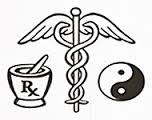 Many have noticed a sudden mainstreaming of certain wellness practices which in the past were deemed alternative. In particular, yoga studios (of course yoga includes a component of meditation), meditation programs, mindfulness-based stress reduction training, massage, and acupuncture practices, are becoming highly visible on Main Street. The longstanding Benson-Henry Institute for Mind Body Medicine at the Mass General Hospital, and now the Cheng-Tsui Integrated Health Center, affiliated with the BI Deaconess, are just two of many such departments affiliated with traditional academic medical centers. Clearly, all are willing to re-adjust the height of the alternative bar.
Many have noticed a sudden mainstreaming of certain wellness practices which in the past were deemed alternative. In particular, yoga studios (of course yoga includes a component of meditation), meditation programs, mindfulness-based stress reduction training, massage, and acupuncture practices, are becoming highly visible on Main Street. The longstanding Benson-Henry Institute for Mind Body Medicine at the Mass General Hospital, and now the Cheng-Tsui Integrated Health Center, affiliated with the BI Deaconess, are just two of many such departments affiliated with traditional academic medical centers. Clearly, all are willing to re-adjust the height of the alternative bar.
First, a word about the term, “Integrative medicine.” I can’t help but to dissertate on the term for a paragraph here because I do love the term. In the 1990’s, based on surveys of both practitioners and patients, it became more clear that all were interested in learning more about alternative therapies. The problem was, though, a gestalt sense that these practices were, just that, alterative. To me, the word “Alternative” means that one chooses it, rather than, or instead of, the other option. The logic has a mutually exclusive feel to it, doesn’t it? And, maybe I’m alone here, but the word “alternative” can also imply a certain strangeness or weirdness. There is nothing strange about stretching, or learning the relaxation response to meditation. Integrating allowed western medicine to open up and include, as it were, without needing to jump ship. You will likely hear the term “Complementary medicine” as well, but I do like the beauty and harmony of integrating ancient eastern practices, with what some call evidence-based medicine.
It is with great enthusiasm that I utilize integrative medicine in my own primary care practice far more liberally, and with far more confidence. The benefits to my patients are great. Yoga, for example, is now regularly prescribed by me as a treatment for certain forms of musculoskeletal pain. Meditation (particularly mindfulness-based meditation) is becoming a prescribed treatment for several conditions, massage therapy clearly is in the prescription pad, and I look forward to further developing the role of integrative medicine in my own clinical practice.
But now, a word of caution. We must, despite the seemingly benign nature of these modalities, be careful not to abuse their power by holding them to a lesser scientific standard. I believe that any prescribed therapy need be subject to the very same scientific standards as all other modalities in the system into which they are integrated. That is not to say, by the way, that we are perfect in our practice of evidence-based medicine. Far from it, but we try. For example, I would never prescribe a medication for cholesterol which has not been tested for safety and effectiveness, or for blood pressure, and therefor nor should I prescribe a complementary therapy which has not been tested for safety and effectiveness. Why not? Because there is no therapy which is free of potential harm, and cost, and the cost of time. Here’s another reason – patients need to trust doctors, and so we owe all of our interventions some test of “realness” so-to-speak.
Here at Classic Healthcare, I have assembled a list of integrative medicine options for our patients, which I believe are safe and effective. For those seeking integrative medicine advice and referrals, we are very glad to provide that service, and to coordinate our patients’ care. Please don’t hesitate to ask.
Off to yoga.
Dr. Van Dam